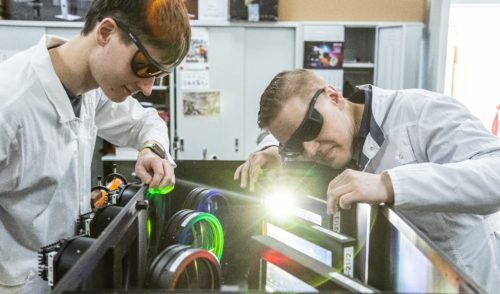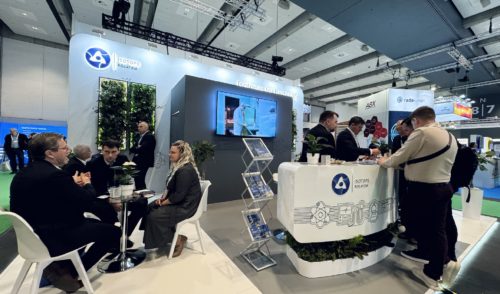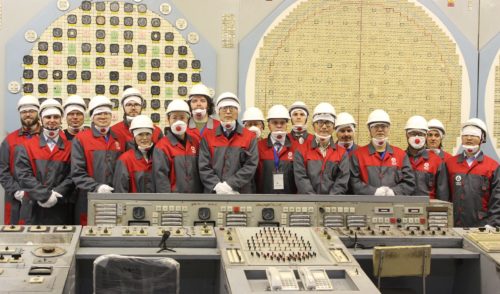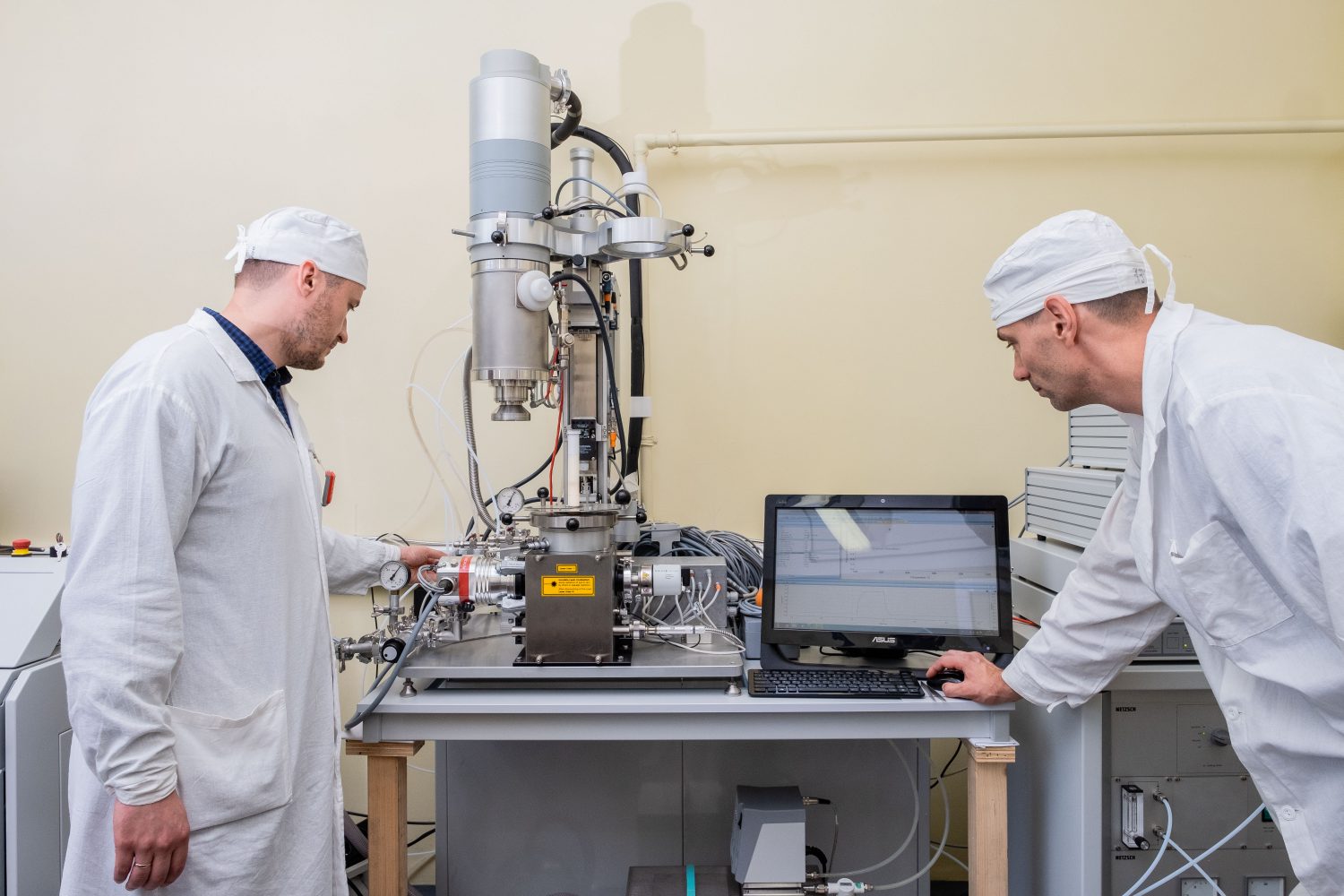
Science as a Priority
back to contentsThe last year’s performance and research trends were discussed at a scientific conference held in May. Event was attended by Rosatom’s senior management, public authorities, scholars and businessmen.
Rosatom’s strategy focuses on nine priority lines of research ranging from nuclear medicine to small modular reactors designs. Apart from applied studies, the company also pursues unbeaten tracks that often lead to the most rewarding discoveries and break new ground for creating fascinating technologies. The company included 131 pilot projects (out of 900 applications) into a consolidated R&D plan for 2019 following the last year’s call for proposals. Rosatom will fund these projects with its own resources.
The company’s target for R&D investments is set at 4.5% of its revenue, which is a benchmark for global innovative corporations.
The goal of the academic conference was to improve communications between R&D and business divisions of Rosatom in order to convert inventions into an in-demand end product as smoothly as possible.
Facts & Figures
Rosatom’s R&D investments
2017:
RUB 15.8 billion (USD 245 million)
2018:
RUB 18 billion (USD 278.5 million)
“Our task is to create a system that will ensure a perfect coordination and unity between science and business to achieve our common goal which is commercialization of new knowledge. Business and science are mutually responsible for the progress that we need so desperately and that is expected from us,” Yuri Olenin, Rosatom’s Deputy CEO for Innovation Management, said in his opening speech. Speaking about pilot projects, he noted that most of them had already been launched.
Each conference session was dedicated to one of Rosatom’s priority lines of research. The panel discussion about the Breakthrough (“Proryv”) Project was focused on the interim progress achieved on the fast reactors and back end of the nuclear fuel cycle. Vadim Lemekhov, Chief Designer of the Breakthrough Project, reported that the regulatory authorities had approved project design documents for BREST OD-300 nuclear power unit and the project was going through the licensing process.
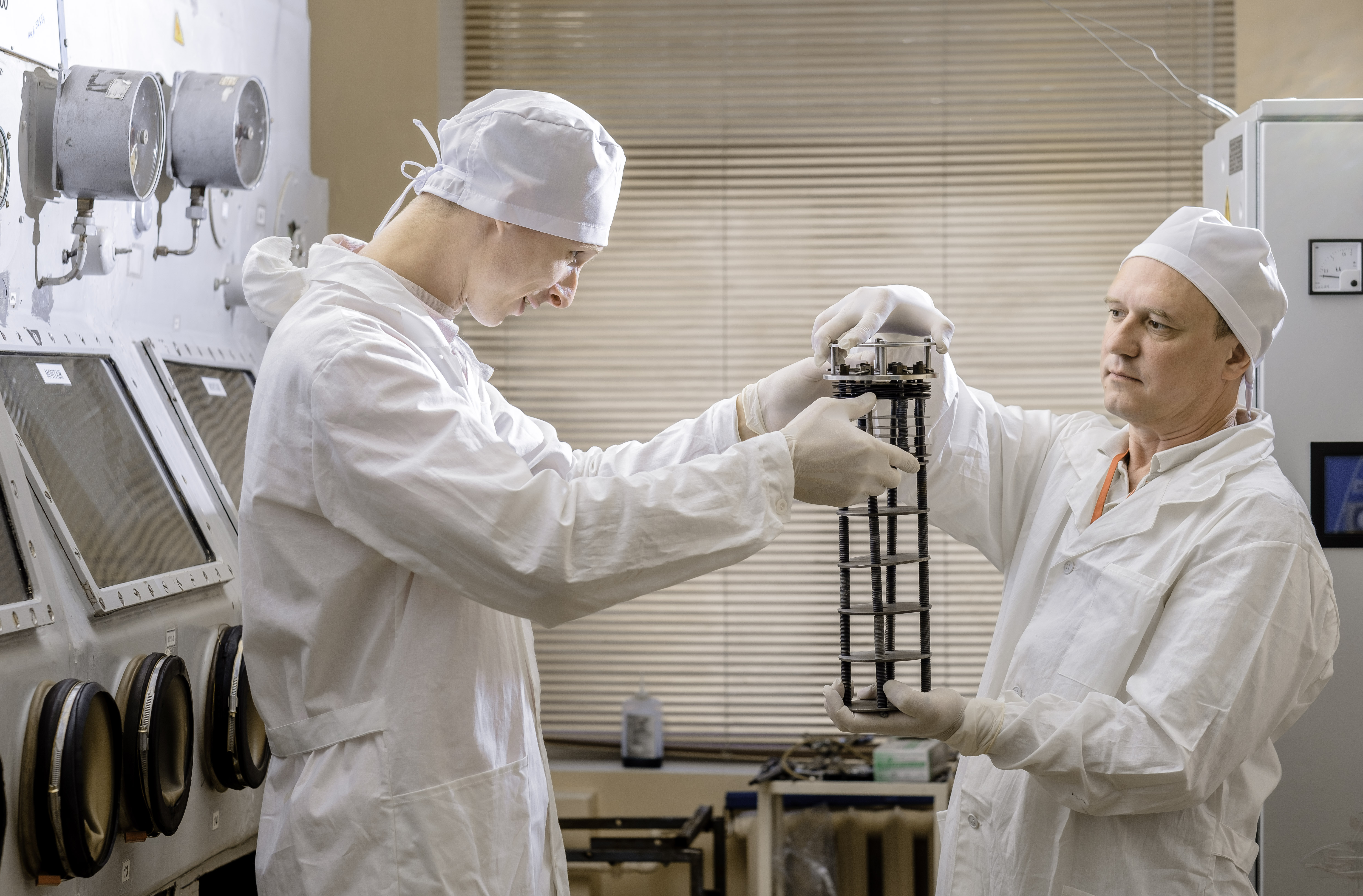 VNIINM (Rosatom’s main science institute on nuclear fuel) Deputy CEO Mikhail Skupov outlined key advantages of the MUPN fuel (mixed uranium plutonium nitride fuel for fast breeder reactors – RN) over oxide and metallic fuels, and noted that 11 experimental MUPN fuel assemblies had passed reactor tests at Beloyarsk NPP. He also added that Rosatom was ready to present its comprehensive offer for the construction and testing of MUPN fuel, post-irradiation studies and repeated use of re-fabricated products. As announced on the VVER-related conference session, Rosatom’s strategic goals also included updating VVER-TOI (VVER-1300) design and development of VVER units with spectral regulation (VVER-S) and ultra supercritical reactors (VVER-SKD).
VNIINM (Rosatom’s main science institute on nuclear fuel) Deputy CEO Mikhail Skupov outlined key advantages of the MUPN fuel (mixed uranium plutonium nitride fuel for fast breeder reactors – RN) over oxide and metallic fuels, and noted that 11 experimental MUPN fuel assemblies had passed reactor tests at Beloyarsk NPP. He also added that Rosatom was ready to present its comprehensive offer for the construction and testing of MUPN fuel, post-irradiation studies and repeated use of re-fabricated products. As announced on the VVER-related conference session, Rosatom’s strategic goals also included updating VVER-TOI (VVER-1300) design and development of VVER units with spectral regulation (VVER-S) and ultra supercritical reactors (VVER-SKD).
Development of laser technologies is another research priority for Rosatom. Sergey Garanin, a member of the Russian Academy of Sciences and Director of the Institute of Laser Physics (part of the Russian Research Institute of Experimental Physics), reported on the use of Russian laser technologies in various areas, including medical and industrial applications.
Small nuclear power plants were also in the limelight. “Our market analysis shows that the world will expand its power capacity of that kind to 20–23 GW by 2040, so we expect our market share to reach at least 20%,” Anton Moskvin, Vice President for Business Development of Rusatom Overseas (a Rosatom Group company) said.
He also outlined benefits of small reactors, such as simple design, improved safety and reliability, transportability, low risk of emergencies, and others. According to him, Rosatom’s competitive advantages in this field are extensive expertise in construction of large capacity nuclear power plants, existing reference reactors for the nuclear icebreaker and submarine fleet, knowledge of construction and design of small nuclear power plants with a total capacity of up to 100 MW, and extensive R&D and production facilities. By now, Rosatom has completed a concept design of a two-unit plant with RITM-200 small reactors.
Conference participants touched upon nuclear medicine and Rosatom’s goals in this area. As reported by Rustam Rakhmatulin, General Director of Rosatom’s Izotop, the global market of radiopharmaceuticals is estimated at USD 6 billion and expected to grow at 8–12% per annum. Nuclear medicine is most widely used in diagnosis and treatment of cancer (USD 3.58 billion or 60% of the market) making it a strategic area for Rosatom.
Rusatom Healthcare’s CEO Alexander Shibanov added that Rosatom had almost 70 years’ expertise in manufacturing of high-end medical products. For example, the company holds 20% of the global cobalt-60 fabrication market and its range of products and services encompasses production of generators, radiopharmaceuticals, medical equipment and tools (accelerators, brachytherapeutical agents, cyclotron radiochemical facilities, monitoring equipment) and construction of health care facilities.
The conference participants were unanimous about the importance of creating new materials and technologies. Rusatom Additive Technologies’ CEO Alexei Dub noted in his speech that Rosatom strived for excellence and technological advancement in many areas, including optimization of the existing reactors and fuel types, handling of cryogenic equipment, carbon and composite materials, and additive technologies. He added that innovations in the latter two areas would provide for new solutions designed to reduce product weight by 60%, reach a threefold decline of time expenditures and reduce production costs by 75%.
The conference participants also discussed advantages of spent nuclear fuel management and multi-recycling strategies, the future role of hydrogen energy and Rosatom’s progress in thermonuclear and plasma research.


